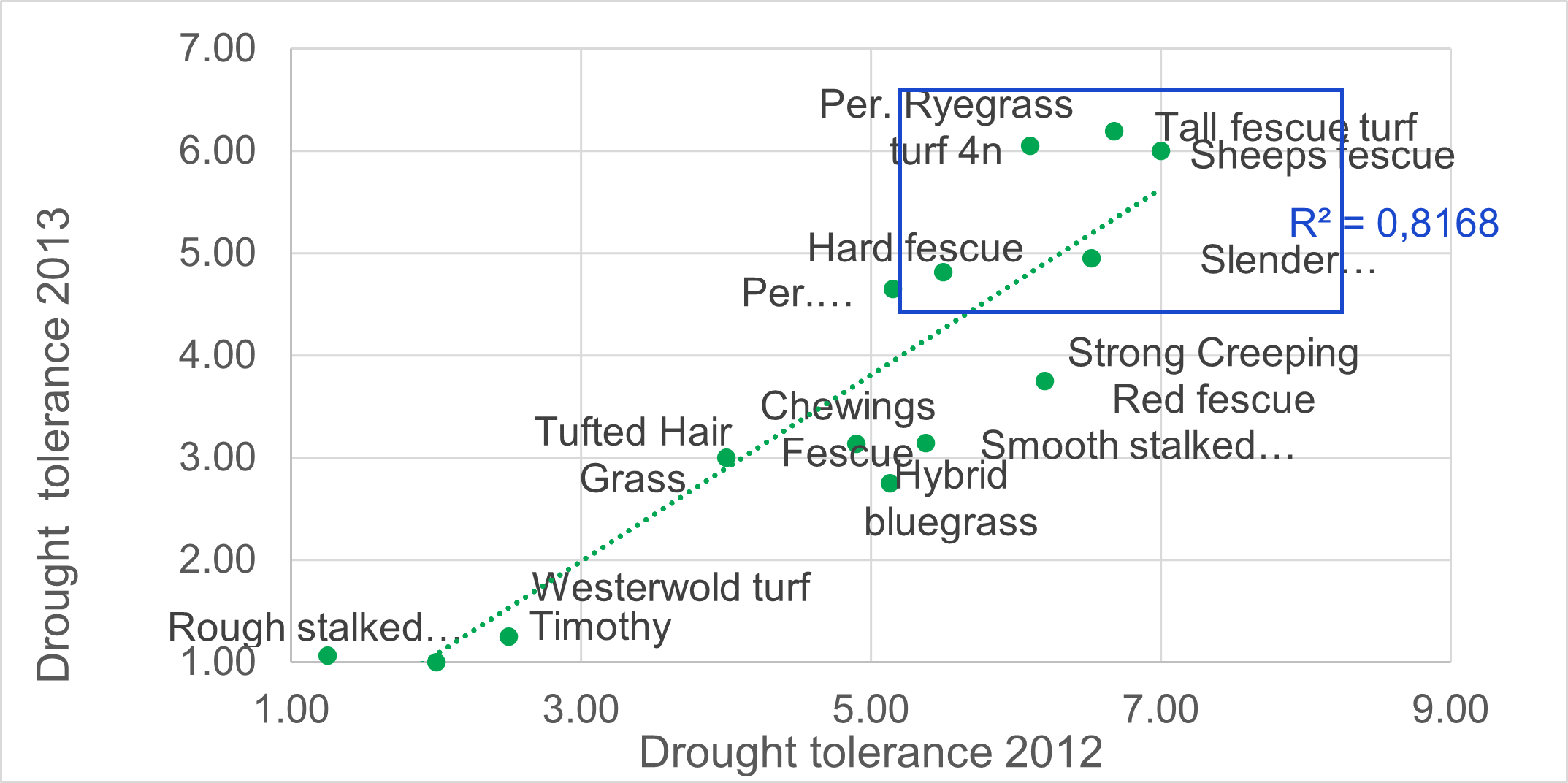United Kingdom
September 7, 2023
With experts predicting that droughts like the one in UK 2022 are likely to become more frequent turf managers will be looking for ways to reduce the impact on their surfaces, while maintaining sward health and density during prolonged periods of hot and dry weather. Looking at golf courses in particular, many clubs have made major steps forward since the last major drought incidence, but what can they do now to further mitigate the impact in future? Stuart Yarwood MG, Regional Technical Manager at DLF and Anne Mette Dahl Jensen Product Development Manager at DLF explores how drought-tolerant Fescues are fundamental in effective fairway management.

Lessons from 2018: Strengthening Golf Course Fairways with Drought-Resistant Fescues
The drought experienced in 2018 provided valuable lessons. The perfect storm of prolonged, intense heat combined with extended drought conditions exposed the vulnerabilities of poorly rooted areas on turf grass playing surfaces. When natural rainfall finally returned, these weakened areas lost out to pioneer species like annual meadow grass, resulting in sustained deterioration of the surfaces quality over the long term.
Although the native Fescues successfully regenerated on fairways that were stroke by these hydrophobic ground conditions, the hangover was still visible at some courses around the country even four years later. This was particularly pronounced during 2022, another recorded drought episode, which appeared to be more severe than the one experienced in 2018.
Many clubs have indeed wisely invested in irrigation upgrades, utilised wetting agents, and increased the frequency of aeration operations to improve root development and moisture management. However, it is still important to perform recovery overseeding over the next few months to further strengthen turf resilience.
Fescue Selection Strategies: Adapting to Spring and Summer Drought Challenges
It is important to understand the effects of different types of drought. Spring droughts occur when, despite the lack of rain, water remains available in the deeper soil layers, necessitating the use of deep-rooting species like Fescue. Combine this with challenging night temperatures and east winds this results in low growth potential and stressed plants. Hence, selecting the right sustainable and high-quality cultivars becomes extremely important.
During a summer drought, even the deeper layers of the profile can run dry and the simultaneous higher temperatures mean the grass above ground has to be able to withstand dehydration from extended ET rates. In 2018 we lost grass as it was too hot for too long, and modern thinking went on to explore other species of Fescue such as Sheep’s and Hard as well as established Fescue species such as Slender, Strong and Chewings.
Choosing the Perfect Blend: Fescue Species for Quality and Resilience'

Figure: Drought tolerance of turfgrass species during 2012 and 2013 as indicated by visual merit score
Fescue Blends for Golf Course Resilience: Johnsons Sports Seed Range
Reinforcing the benefits of a blend, most of the DLF mixtures available from the Johnsons Sports Seed ranges comprise a variety of fescue species for improved sward quality and sustainable management.
Johnsons J Fescue, The leading greens Fescue mix, combines three slender and three chewings fescue cultivars to create a high quality sward that requires lower input of water and fertiliser.
Johnsons J Fairway is a sustainable blend of Chewings, Slender, Strong, and Hard Fescues, top rated for visual merit and improved drought and disease tolerance
Johnsons J Links is a pure rhizomatous Slender mix designed for maximum drought recovery
Johnsons J Premier Fairway Supremely suited to fairways and tees, provides the ultimate formulation of chewings, slender, strong, sheep’s and hard fescue – with four of the seven cultivars included topping the BSPB charts.
J Sustain-Fairway has been designed to suit golf clubs looking to significantly boost the population of more resilient Hard and Sheep’s Fescues – known for their increased tolerance to a broad range of turf stresses. With a natural foundation of strength, this fairway mix allows for reduced nutrient, water and chemical inputs all while maintaining exceptional turf quality.
You can also find DLF Fescue mixtures designed for golf courses in countries beyond the UK. The specific composition and varieties included in these mixes may differ from those specified in the Johnson mixes.
Maximizing Fescue Overseeding Benefits: Best Practices for Golf Course Maintenance
To maximize the benefits of fescue overseeding, it's essential to follow proper maintenance practices. Ensuring good soil contact and optimal soil temperatures is paramount. With soil temperatures remaining favourable well into November, this period offers an excellent opportunity to introduce Fescues to your course. During these cooler time, of limited drought and heat stress mowing heights will be higher, frequency of cut reduced, and therefore protecting the newly hatched seedlings from damages.
As with most operations, be sure to communicate well with golfers and committees. Clearly explain why this overseeding work is being undertaken and emphasize the advantages it will bring when the new playing season arrives. This proactive communication fosters understanding and support for the maintenance efforts.
It important to choose the right species and cultivars of grass for your site, your agronomic direction and budget. Please also consider the commercial availability on grass seed mixes as demand for seed can peak through these stressful times, leaving stocks and greenkeepers/contractors seeding machines running low.
Once the seed is in the ground, when conditions allow, encourage deep rooting with low disturbance frequent slitting or Vertidraining on the fairways. Targeted hollow coring for any particularly compacted or problematic area, prior to seeding will be beneficial. If budgets permit, utilise Seaweed tonics & penetrants on the fairways over the winter to maximise moisture movement through the profile, thus restoring moisture retention to hydrophobic areas.
If fairways are de-compacted, traffic managed, and enjoy sustainable nutrient & moisture levels, along with good agronomic husbandry, then Fescues will naturally flourish.
Hopefully the team at DLF can help you understand how the incorporation of Fescue fits into the broader operations and management of the course and help you plan and create success through future climate change, whatever the weather may bring.